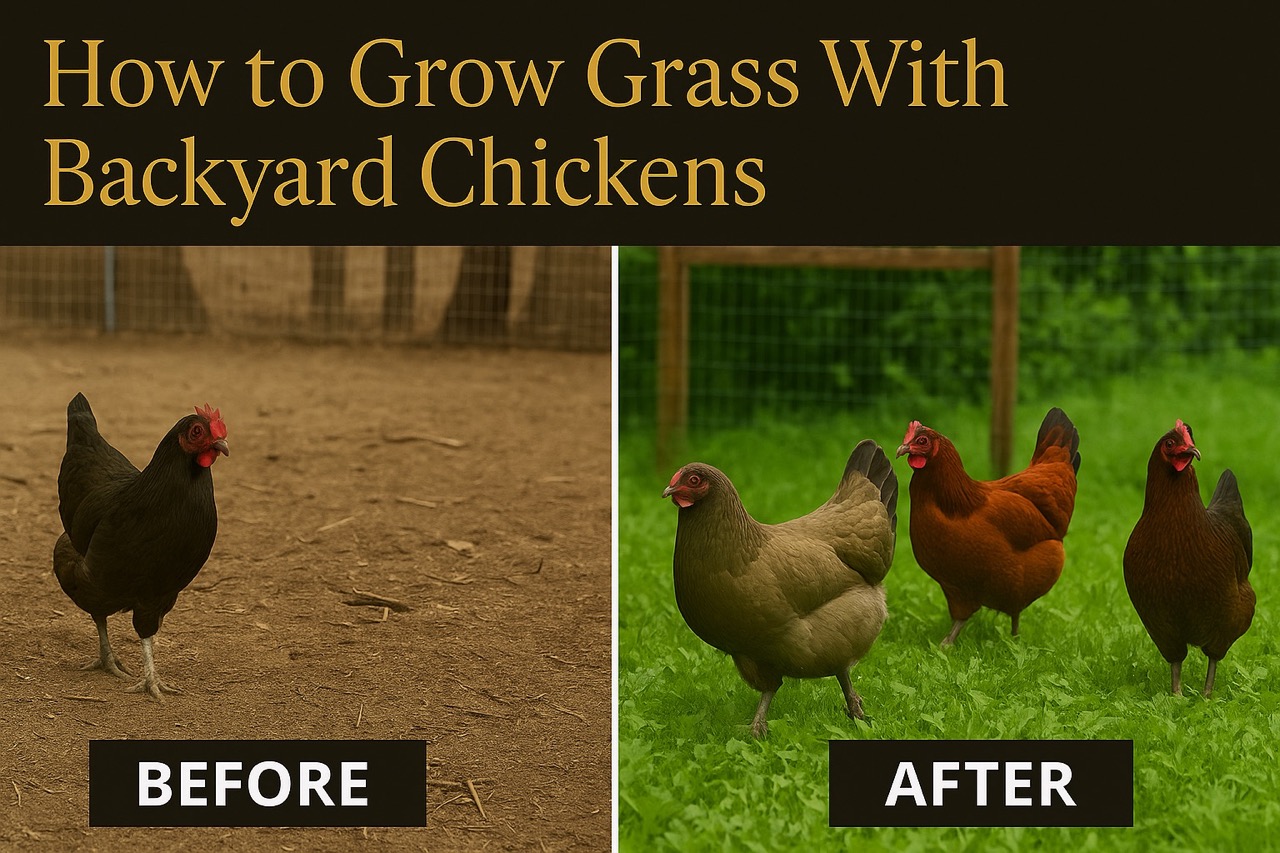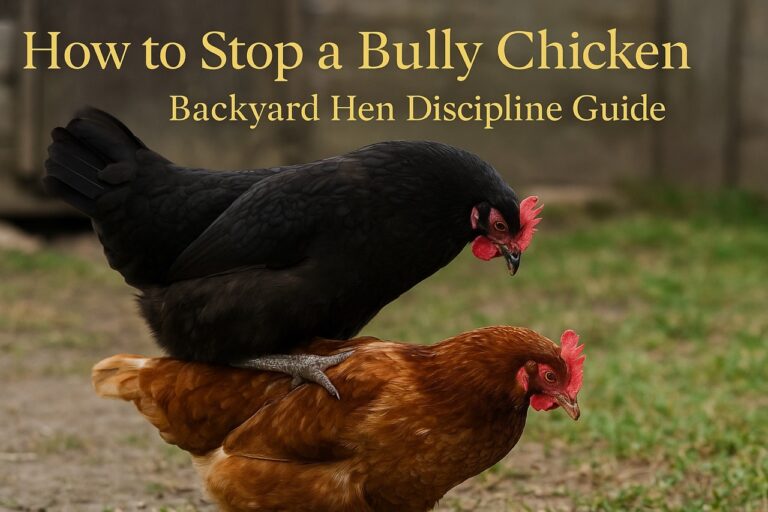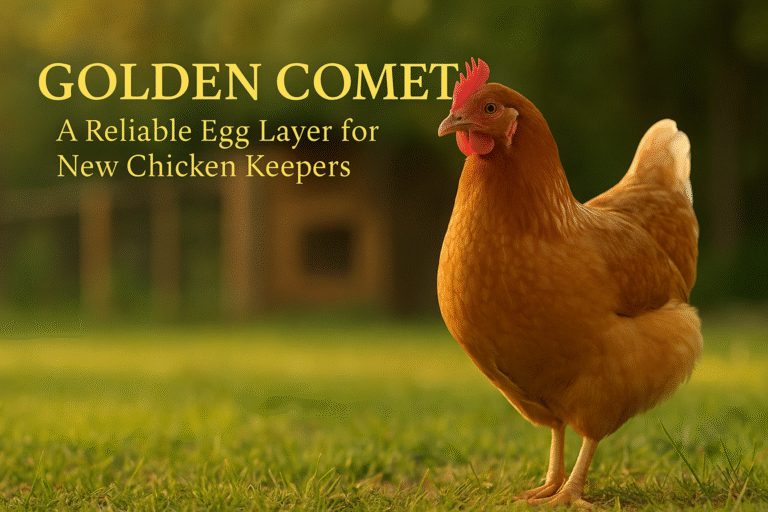Trying to figure out how to grow grass with backyard chickens? You’re not alone. If your yard has turned into a dust bowl thanks to constant scratching, pecking, and dust bathing, it can feel like grass is gone for good. But there’s a proven way to bring it back — even in the Southeast heat.
If you’re in the Southeast like me, it’s hot, it’s June, and your chickens have scratched your backyard into a barren wasteland. No grass, no shade, just dust baths and a few feathers blowing in the breeze. But here’s the good news: it doesn’t have to stay this way.
You can have chickens AND a backyard with actual green stuff. You just need the right strategy, the right seed, and a little patience.
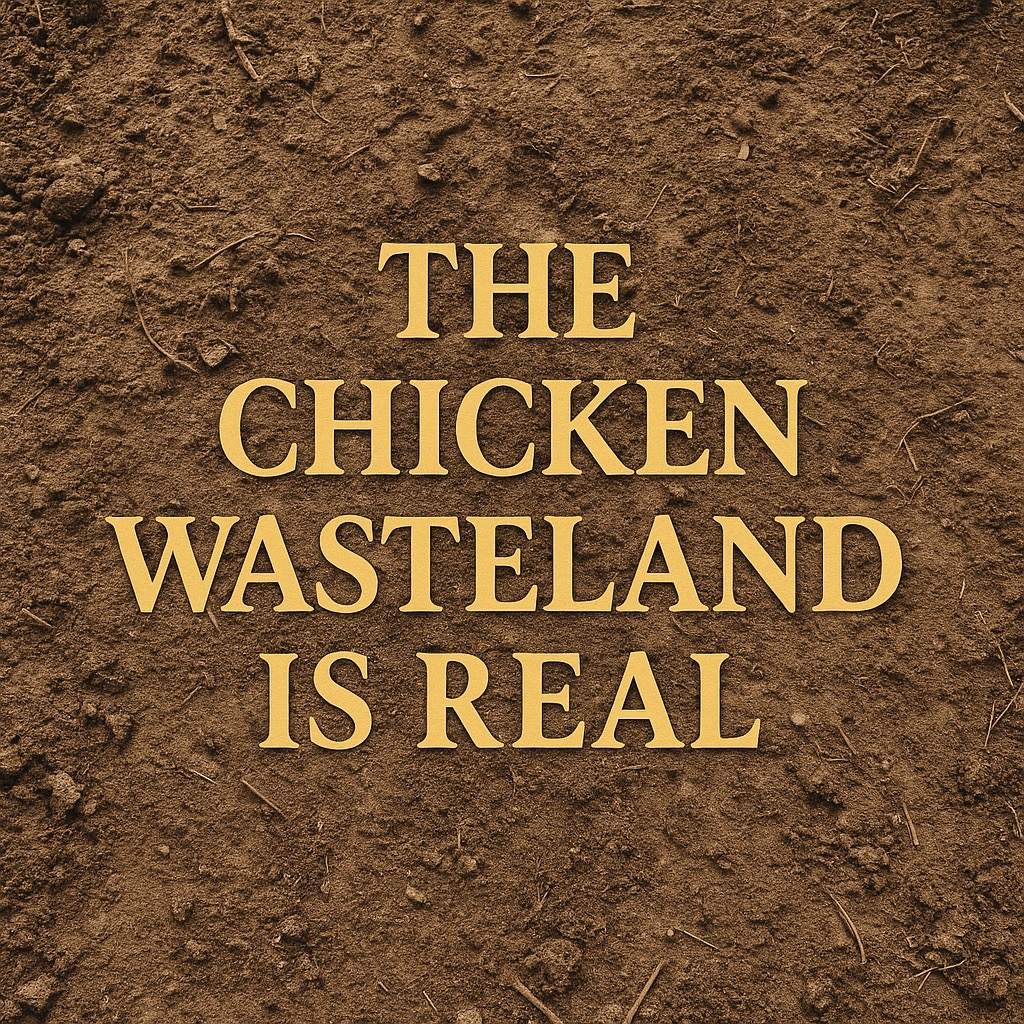
🐔 The Chicken Wasteland Is Real
Chickens love to forage. But that means they also:
- Scratch up roots
- Eat fresh growth before it matures
- Dust bathe until craters form
- Trample everything into oblivion
Most chicken yards look great for about 3 weeks… until the ground gives up. Add summer heat and rain erosion, and it turns to dust fast.
🌿 Can You Really Grow Grass With Chickens?
Yes — but not with the same expectations as a traditional lawn.
You won’t get pristine golf-course turf, but with planning, you can regrow chicken-safe grass, edible forage, and even a few shade plants. The key? Rotation, protection, and smart planting.
🧬 Best Grasses and Ground Covers for the Southeast (Chicken-Tolerant)
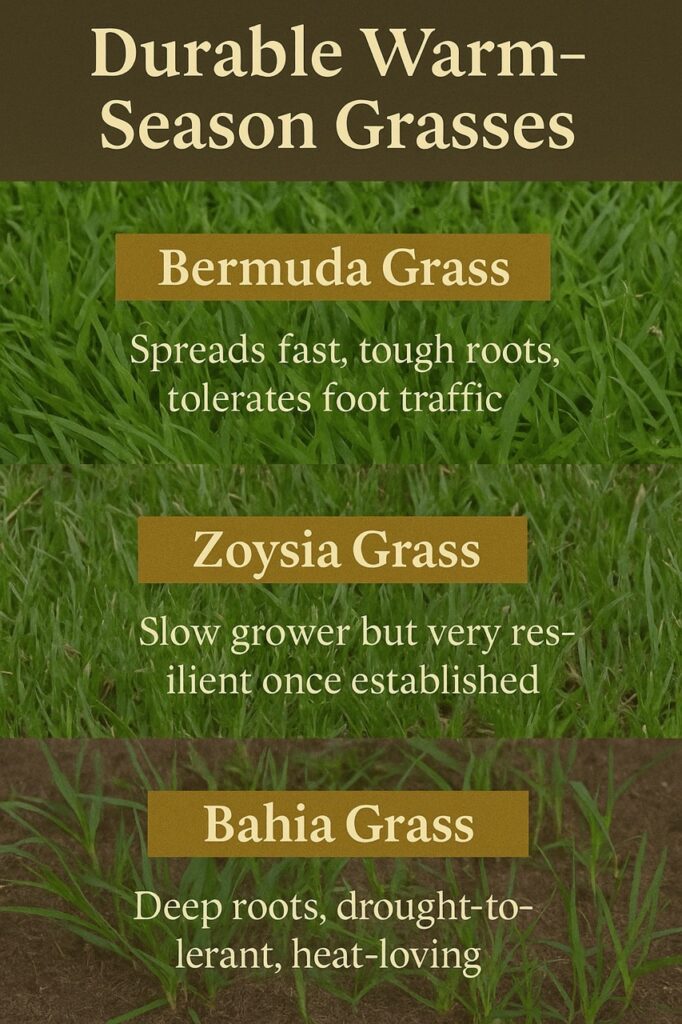
Durable Warm-Season Grasses
- Bermuda Grass: Spreads fast, tough roots, tolerates foot traffic.
- Zoysia Grass: Slow grower but very resilient once established.
- Bahia Grass: Deep roots, drought-tolerant, heat-loving.
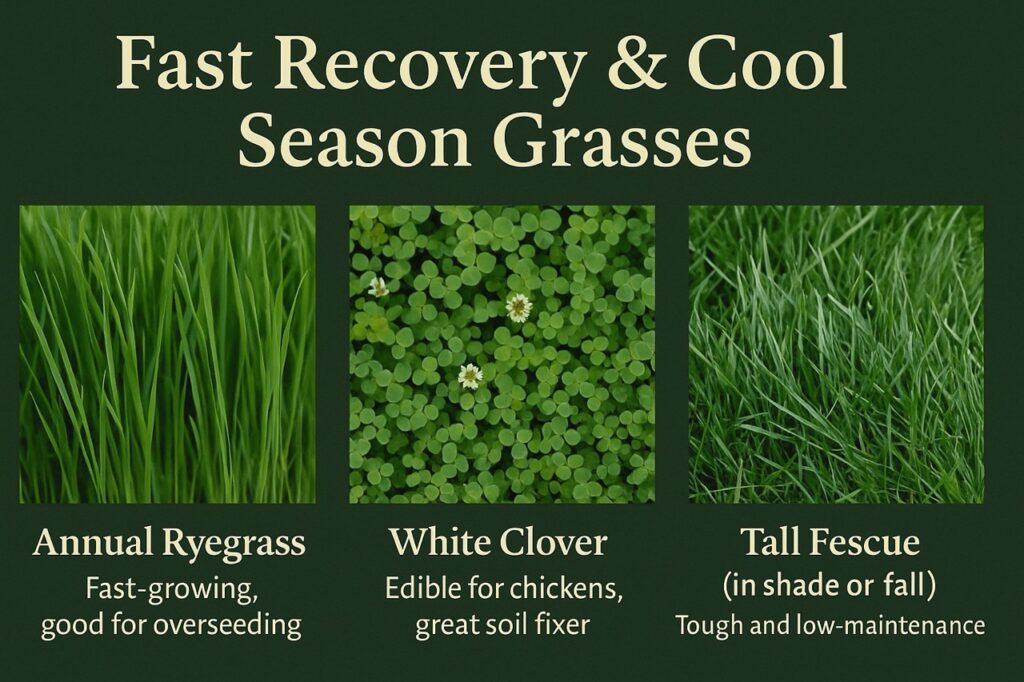
Fast Recovery & Cool Season Grasses
- Annual Ryegrass: Fast-growing, good for overseeding.
- White Clover: Edible for chickens, great soil fixer.
- Tall Fescue (in shade or fall): Tough and low-maintenance.
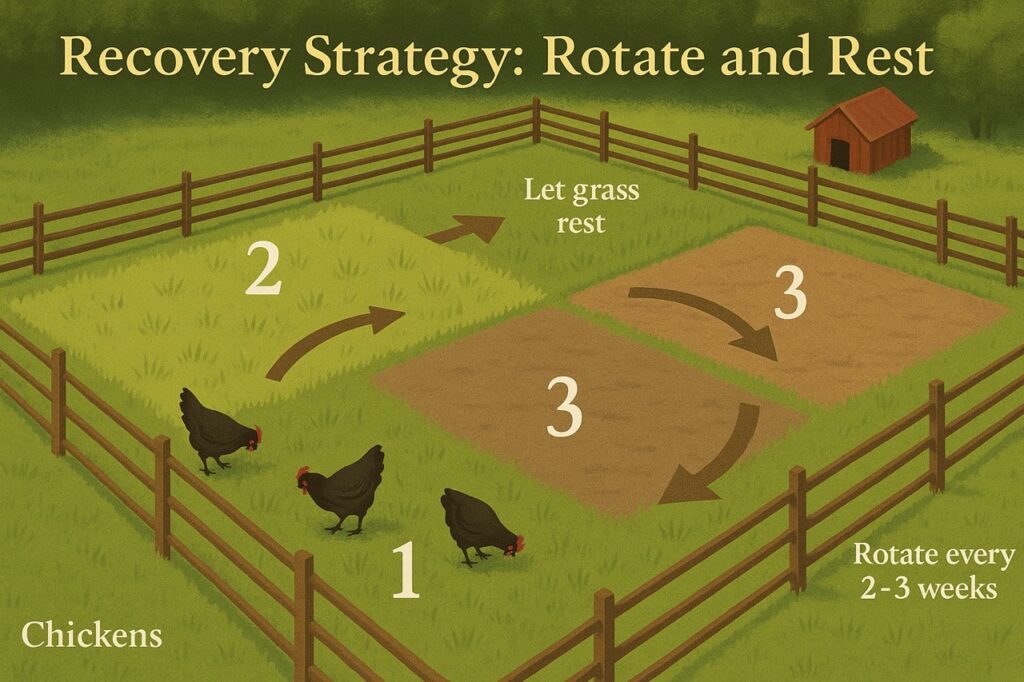
⛩️ Recovery Strategy: Rotate and Rest
If chickens have full access 24/7, no grass stands a chance. Here’s how to fix it:
1. Divide Your Yard
- Use poultry netting, chicken wire, or movable fencing.
- Create 2–3 zones they can rotate through.
2. Rest and Reseed
- While chickens graze Zone A, reseed Zone B with ryegrass, clover, or native forage.
- Add mulch or straw to help retain moisture and cover sprouts.
3. Rotate Every 2–3 Weeks
- Keeps pressure low on each zone.
- Prevents permanent damage.
Bonus: Use chicken tunnels or portable pens for focused foraging while protecting the rest.

🌱 What Else Can You Grow That Chickens Like (and Won’t Destroy Instantly)?
- Herbs: Oregano, mint, thyme, and parsley. Use raised beds or baskets.
- Forage Crops: Buckwheat, sunflower, amaranth. Plant in dense patches.
- Vine Crops: Let cucumbers, beans, or squash grow up fences.
- Root Crops: Beets, turnips, radishes (protect while growing).
Chickens love variety and nutrition-rich greens. Think beyond lawn.
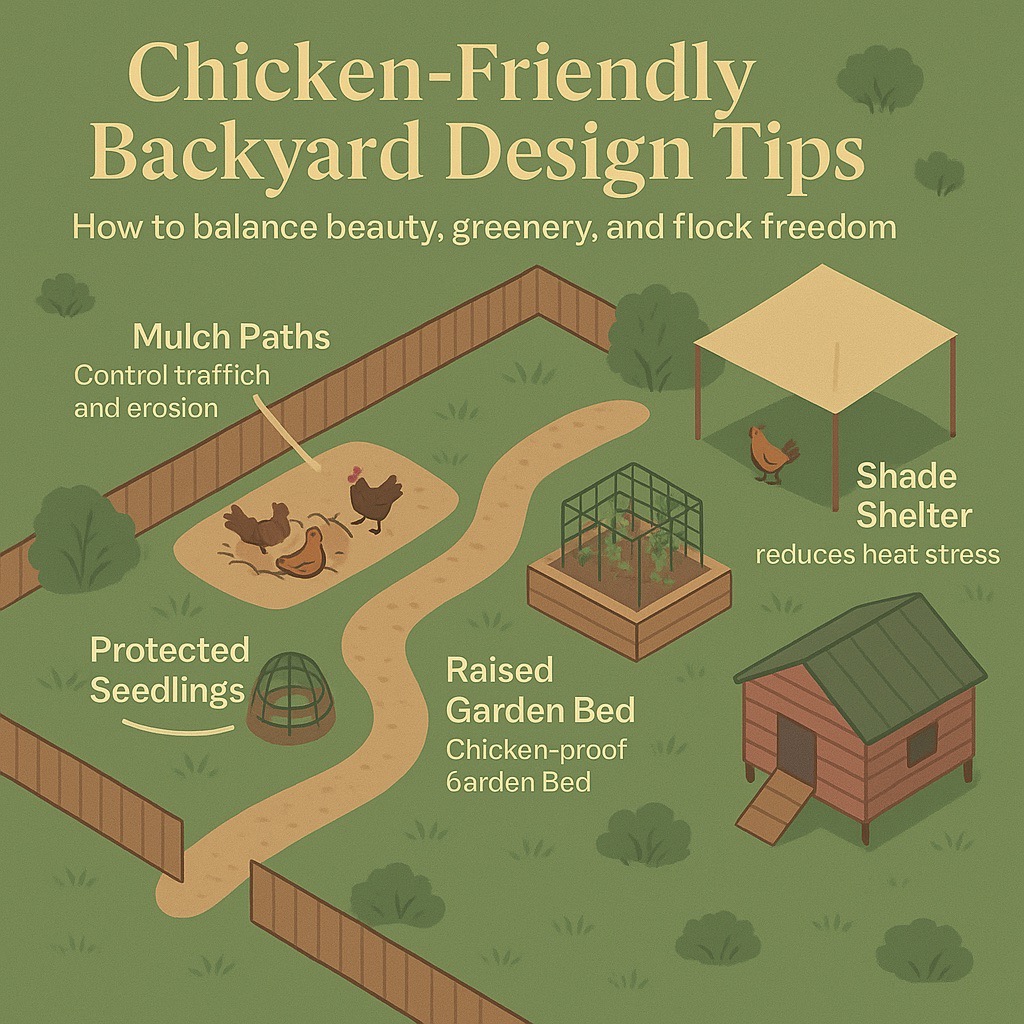
🏠 Design Tips for a Chicken-Friendly, Green Backyard
- Add mulch paths to control traffic and erosion.
- Designate a dust bath zone (add ash, DE, and dry soil).
- Use hardware cloth domes to protect seedlings during early growth.
- Build raised beds or use chicken-proof fencing around tender zones.
- Provide portable shade structures to reduce heat and help plants survive.

📆 Southeast Planting Plan By Season
Spring (Mar–May): White clover, ryegrass, buckwheat, alfalfa.
Summer (Jun–Aug): Bermuda seed, sunflower, cowpea, millet.
Fall (Sep–Nov): Annual ryegrass, wheat, hairy vetch, radish tops.
Winter (Dec–Feb): Mulch thickly, add compost, start seedlings indoors.
🌟 Final Thoughts: You Can Rewild Your Chicken Yard
It won’t be perfect. There will always be bare patches, dust bowls, and chicken craters. But with the right plan, you can restore living forage, protect soil, and give your flock a greener, healthier backyard.
You don’t have to choose between chickens and green space.
You just need a strategy.
🔗 Related Reading
- Chicken Space Requirements
- Winter Cover Crops for Chickens
- Optimized Living: Low-Cost Chicken Feed Ideas
- Backyard Chickens & Sustainability
- Chicken Dust Bath Guide
🌿 External Resources on Regrowing Grass with Chickens
🐔 Chicken-Friendly Grasses and Ground Covers
- Best Grasses for Southern Lawns
Explore warm-season grasses like Bermuda, Zoysia, and Bahia that thrive in the Southeast’s climate.
Southern Living - Cover Crops Suitable for Chickens
Learn about cover crops such as clover, alfalfa, and rye that provide nutrition and soil benefits for your flock.
Gardening Know How - Fast-Growing Grasses for Quick Lawn Recovery
Discover grass varieties that establish rapidly, helping to restore your yard efficiently.
Real Simple
🔁 Rotational Grazing and Chicken Run Management
- Implementing Rotational Grazing in Chicken Runs
Understand the benefits and methods of rotating your chickens to prevent overgrazing.
Hobby Farms - Using Electric Poultry Fencing for Grazing
Learn how electric fencing can aid in managing grazing patterns and protecting regrowing areas.
Meyer Hatchery Blog
🌸 Landscaping Ideas for Chicken Yards
- Plants That Thrive in Chicken Runs
Discover hardy plants like mint, ornamental grasses, and sweet potato vines that can withstand chicken activity.
The Chicken Chick - Creating a Chicken-Friendly Garden
Tips on selecting plants and designing a garden that accommodates your chickens’ needs.
PlantTAGG - DIY Grazing Frames for Chickens
Instructions on building grazing frames to protect young plants while allowing chickens to forage.
The Garden Coop
❓ Frequently Asked Questions: Chickens and Lawn Regrowth
🐓 Chicken Damage & Yard Recovery
Q: Why do chickens destroy grass so quickly?
A: Chickens scratch, peck, and dust bathe constantly, which uproots tender grass, compacts soil, and kills roots before grass can establish.
Q: Can grass grow back after chickens ruin it?
A: Yes, but only with rest and reseeding. You’ll need to block access temporarily and use fast-growing, hardy grass types like ryegrass or clover.
Q: What is the best way to fix a yard destroyed by chickens?
A: Divide your yard into zones, reseed one section at a time, and rotate chickens so each area gets recovery time.
🌱 Chicken-Safe Grasses & Plants
Q: What type of grass is most chicken-resistant in the Southeast?
A: Bermuda, Bahia, and Zoysia are great for hot climates and heavy foot traffic. They’re tough, fast-growing, and drought-tolerant.
Q: Is clover safe for chickens to eat?
A: Yes! White clover is both nutritious and soil-enriching, making it ideal for overseeding and foraging.
Q: What is the best grass to plant in a chicken run?
A: For a run, use resilient and fast-recovering options like ryegrass (cool season) or Bermuda (warm season), mixed with clover.
🛠️ Preventing Future Destruction
Q: How do I protect new grass from chickens?
A: Use poultry netting, hardware cloth domes, or fenced-off sections. Let grass mature before reintroducing birds.
Q: Can chickens free range and still have a grassy backyard?
A: Only with paddock rotation or part-time free-ranging. Constant access will always result in bare ground.
Q: How do I create a rotational grazing setup for chickens?
A: Divide the yard with temporary fencing into 2–4 zones and rotate every 2–3 weeks to allow regrowth.
🧬 Lawn & Forage Compatibility
Q: Can chickens eat fescue or ryegrass?
A: Yes, both are safe and often used in foraging mixes. Ryegrass is especially good for quick regrowth.
Q: Is it safe to plant herbs in the chicken yard?
A: Many herbs like mint, oregano, and thyme are not only safe — they’re beneficial for chicken health.
Q: What can I grow that chickens won’t immediately destroy?
A: Hardy vines (cucumbers, squash), tall sunflowers, and fenced root crops can survive chicken curiosity.
🌿 Alternative Ground Covers & Landscaping
Q: Can I use mulch instead of grass in a chicken yard?
A: Yes. Wood chips, straw, or pine needles work well, especially in high-traffic areas like dust baths or under roosts.
Q: What’s a good chicken-safe ground cover besides grass?
A: Clover, creeping thyme, alfalfa, and certain native forbs make great low-maintenance alternatives.
Q: Can I plant cover crops for chickens?
A: Definitely. Use buckwheat, wheatgrass, cowpeas, and rye to provide temporary green forage and soil improvement.
📅 Seasonal Planning & Climate Tips
Q: When should I reseed grass in the Southeast?
A: Late spring to early summer is best for warm-season grasses; fall works well for ryegrass and clover mixes.
Q: How do I keep a chicken yard green in summer?
A: Use heat-tolerant grass like Bahia or Bermuda, rotate zones, and water early in the morning to prevent evaporation.
Q: Is it worth planting anything in a chicken yard during winter?
A: Yes. Winter rye, wheat, or clover can germinate and protect soil. Add straw mulch and compost to prep for spring.

